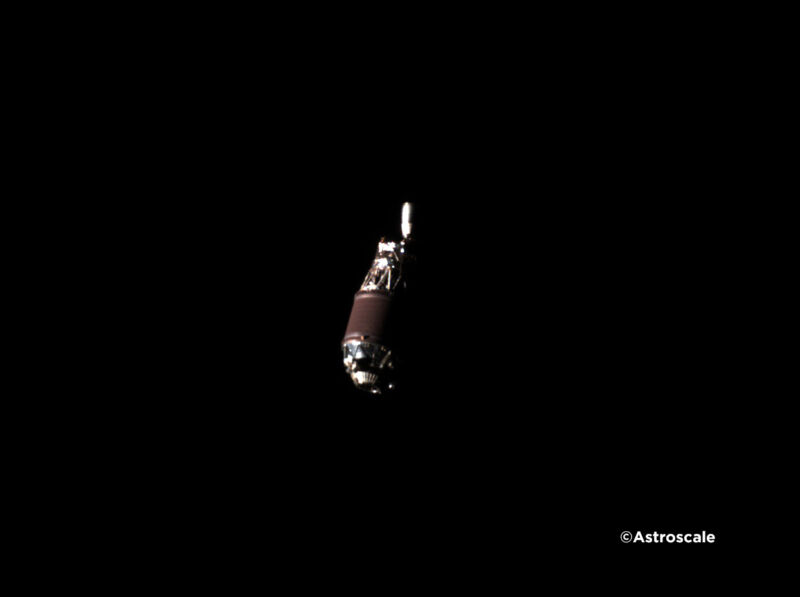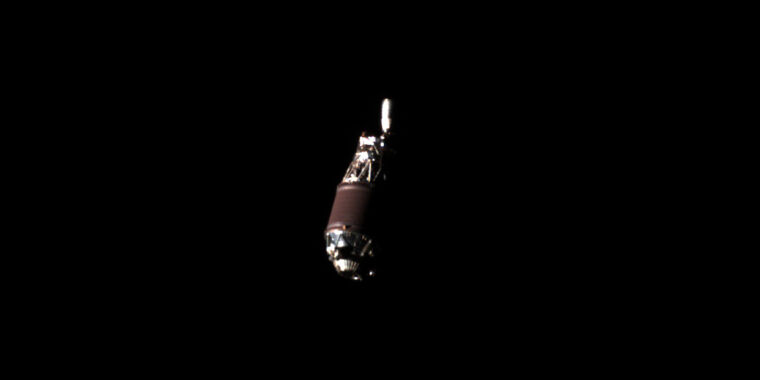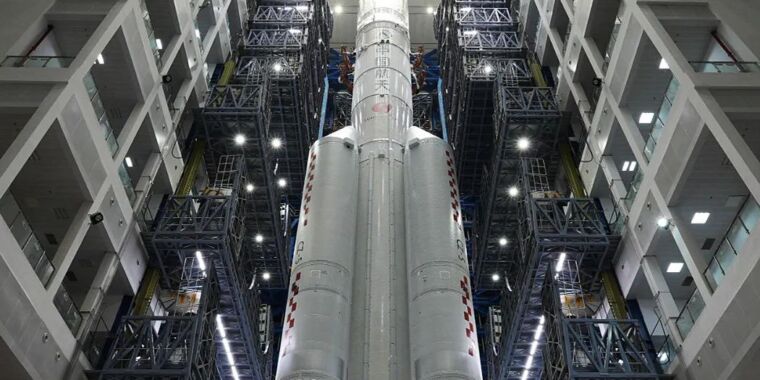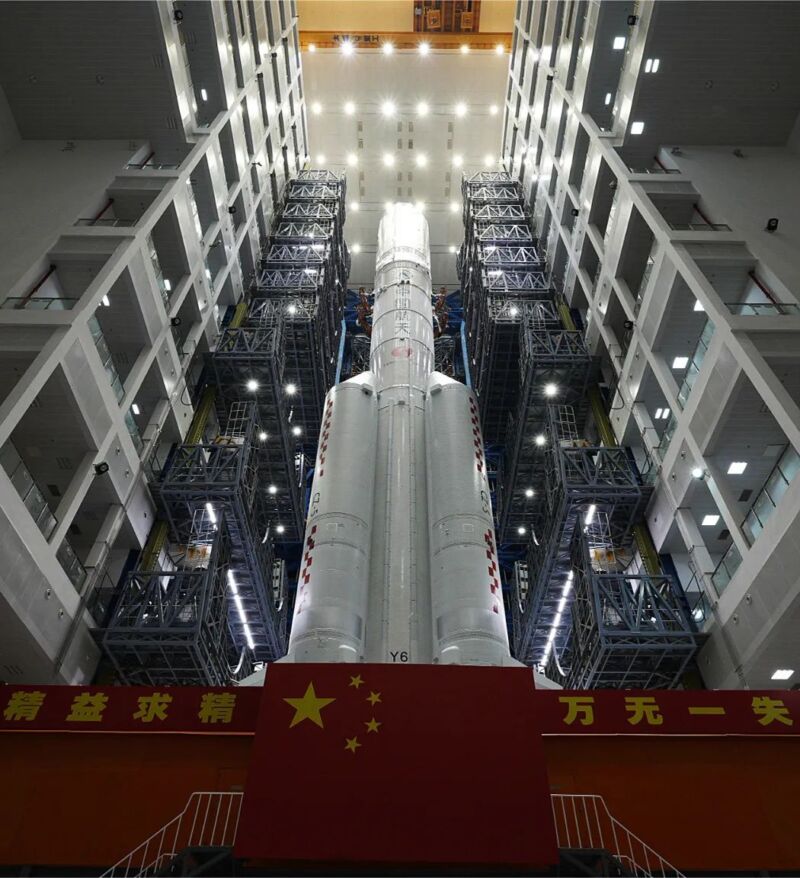Rocket Report: Astroscale chases down dead rocket; Ariane 6 on the pad
RIP B1060 —
Rocket Factory Augsburg, a German launch startup, nears a test-firing of its booster.

Enlarge / This image captured by Astroscale’s ADRAS-J satellite shows the discarded upper stage from a Japanese H-IIA rocket.
Welcome to Edition 6.42 of the Rocket Report! Several major missions are set for launch in the next few months. These include the first crew flight on Boeing’s Starliner spacecraft, set for liftoff on May 6, and the next test flight of SpaceX’s Starship rocket, which could happen before the end of May. Perhaps as soon as early summer, SpaceX could launch the Polaris Dawn mission with four private astronauts, who will perform the first fully commercial spacewalk in orbit. In June or July, Europe’s new Ariane 6 rocket is slated to launch for the first time. Rest assured, Ars will have it all covered.
As always, we welcome reader submissions, and if you don’t want to miss an issue, please subscribe using the box below (the form will not appear on AMP-enabled versions of the site). Each report will include information on small-, medium-, and heavy-lift rockets as well as a quick look ahead at the next three launches on the calendar.

German rocket arrives at Scottish spaceport. Rocket Factory Augsburg has delivered a booster for its privately developed RFA One rocket to SaxaVord Spaceport in Scotland, the company announced on X. The first stage for the RFA One rocket was installed on its launch pad at SaxaVord to undergo preparations for a static fire test. The booster arrived at the Scottish launch site with five of its kerosene-fueled Helix engines. The remaining four Helix engines, for a total of nine, will be fitted to the RFA One booster at SaxaVord, the company said.
Aiming to fly this year… RFA hopes to launch its first orbital-class rocket by the end of 2024. The UK’s Civil Aviation Authority last month granted a range license to SaxaVord Spaceport to allow the spaceport operator to control the sea and airspace during a launch. RFA is primarily privately funded but has won financial support from the European Space Agency, the UK Space Agency, and the German space agency, known as DLR. The RFA One rocket will have three stages, stand nearly 100 feet (30 meters) tall, and can carry nearly 2,900 pounds (1,300 kilograms) of payload into a polar Sun-synchronous orbit.
Arianespace wins ESA launch contract. The European Space Agency has awarded Arianespace a contract to launch a joint European-Chinese space science satellite in late 2025, European Spaceflight reports. The Solar wind Magnetosphere Ionosphere Link Explorer (SMILE) is a 4,850-pound (2,200-kilogram) spacecraft that will study Earth’s magnetic environment on a global scale. The aim of the mission is to build a more complete understanding of the Sun-Earth connection. On Tuesday, ESA officially signed a contract for Arianespace to launch SMILE aboard a Vega C rocket, which is built by the Italian rocket-maker Avio.
But it may not keep it … In late 2023, ESA member states agreed to allow Avio to market and manage the launch of Vega C flights independent of Arianespace. When the deal was initially struck, 17 flights were contracted through Arianespace to be launched aboard Vega vehicles. While these missions are still managed by Arianespace, Avio is working with the launch provider to strike a deal that would allow the Italian rocket builder to assume the management of all Vega flights. The Vega C rocket has been grounded since a launch failure in 2022 forced Avio to redesign the nozzle of the rocket’s solid-fueled second-stage motor. Vega C is scheduled to return to flight before the end of 2024. (submitted by Ken the Bin)
The easiest way to keep up with Eric Berger’s space reporting is to sign up for his newsletter, we’ll collect his stories in your inbox.
Update on ABL’s second launch. ABL Space Systems expected to launch its second light-class RS1 rocket earlier this year, but the company encountered an anomaly during ground testing at the launch site in Alaska, according to Aria Alamalhodaei of TechCrunch. Kevin Sagis, ABL’s chief engineer, said there is “no significant delay” in the launch of the second RS1 rocket, but the company has not announced a firm schedule. “During ground testing designed to screen the vehicle for flight, an issue presented that caused us to roll back to the hangar,” Sagis said, according to Alamalhodaei. “We have since resolved and dispositioned the issue. There was no loss of hardware and we have validated vehicle health back out on the pad. We are continuing with preparations for static fire and launch.”
Nearly 16 months without a launch … ABL’s first RS1 test flight in January 2023 ended seconds after liftoff with the premature shutdown of its liquid-fueled engines. The rocket crashed back onto its launch pad in Alaska. An investigation revealed a fire in the aft end of the RS1 booster burned through wiring harnesses, causing the rocket to lose power and shut off its engines. Engineers believe the rocket’s mobile launch mount was too small, placing the rocket too close to the ground when it ignited its engines. This caused the hot engine exhaust to recirculate under the rocket and led to a fire in the engine compartment as it took off.
Rocket Report: Astroscale chases down dead rocket; Ariane 6 on the pad Read More »


